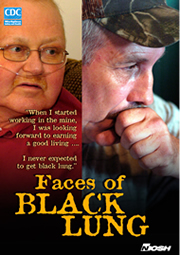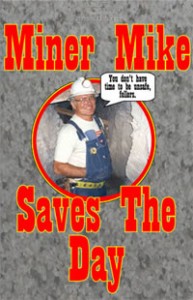Categories: At-risk populations, Training, Young Workers
July 9th, 2012 8:00 am ET -
Dawn Castillo, MPH; Rebecca Guerin, MA; Andrea Okun, DrPH
 Are you the parent of a teen or young adult? Chances are he or she is looking for or has found a summer job. Work provides teenagers with job skills, independence, and unique experiences that help them transition to adulthood. Despite the benefits of work for young people, a number of hazards exist in the work environment that put them at risk for injury, illness and even death. Every minute a young worker is injured on the job[i]. Adolescents and young adults (age: 15–24 years) suffer approximately twice the rate of occupational injuries as older workers[i]. The United States has set a goal of reducing the incidence rate of occupational injury by 10% among adolescents aged 15–19 years old by 2020[ii].
Are you the parent of a teen or young adult? Chances are he or she is looking for or has found a summer job. Work provides teenagers with job skills, independence, and unique experiences that help them transition to adulthood. Despite the benefits of work for young people, a number of hazards exist in the work environment that put them at risk for injury, illness and even death. Every minute a young worker is injured on the job[i]. Adolescents and young adults (age: 15–24 years) suffer approximately twice the rate of occupational injuries as older workers[i]. The United States has set a goal of reducing the incidence rate of occupational injury by 10% among adolescents aged 15–19 years old by 2020[ii].
While employers have the biggest responsibility to reduce occupational injuries among adolescent workers, others have crucial roles to play as well. The young workers themselves must follow the safe work practices established by their employers. Schools, labor unions, and federal and state agencies also bear responsibilities. Parents, like you, also play a vital role in protecting young people in the workplace.
 7 Comments -
Read more
7 Comments -
Read more

Categories: Training
January 29th, 2010 12:17 pm ET -
Carol Merry Stephenson, PhD
 Training is an important part of efforts to reduce workplace injury, illness, and death. In the United States, the total cost of workplace training is over $100 billion per year.1 In light of the costs and time involved with safety and health training, businesses want to know whether training can meet the goals of decreasing workplace injuries and illness, and whether the cost of training programs can be justified.
Training is an important part of efforts to reduce workplace injury, illness, and death. In the United States, the total cost of workplace training is over $100 billion per year.1 In light of the costs and time involved with safety and health training, businesses want to know whether training can meet the goals of decreasing workplace injuries and illness, and whether the cost of training programs can be justified.
To better understand if occupational health and safety training and education programs have a beneficial effect on workers and businesses, the National Institute for Occupational Safety and Health (NIOSH) in collaboration with the Institute for Work and Health (IWH), Ontario, Canada, conducted a review of some of the recent research in this area. Earlier this month NIOSH and IWH released “A Systematic Review of the Effectiveness of Training & Education for the Protection of Workers.”
 29 Comments -
Read more
29 Comments -
Read more

Categories: Mining, Respiratory health, Training
August 18th, 2008 9:47 am ET -
Administrator

In the last decade, over 10,000 miners have died of coal workers’ pneumoconiosis, or what is commonly called black lung disease.
1 Black lung disease, which is caused by inhaling coal mine dust, results in scarring of the lungs and emphysema, shortness of breath, disability, and premature death. While the prevalence of black lung disease had decreased by about 90% from 1969 to 1995 following the enactment of the Coal Mine Health and Safety Act, the downward trend of this disease in coal miners has stopped. Since 1995, the prevalence of black lung cases has more than doubled. Many current underground miners (some as young as in their 30s) are developing severe and advanced cases. Identification of advanced cases among miners under age 50 is of particular concern, as they were exposed to coal-mine dust in the years after implementation of the disease prevention measures mandated by the 1969 federal legislation. An increased risk of pneumoconiosis has also been associated with work in certain mining jobs, in smaller mines, in several geographic areas, and among contract miners.
2
 8 Comments - Read more
8 Comments - Read more

Categories: Mining, Training
March 3rd, 2008 11:23 am ET -
Elaine T Cullen, PhD
 How do you take miners miles below ground to teach them how to protect themselves from some of the most dangerous hazards in the mining industry without endangering their safety or ever leaving the comfort and security of the training room? The answer, training videos.
How do you take miners miles below ground to teach them how to protect themselves from some of the most dangerous hazards in the mining industry without endangering their safety or ever leaving the comfort and security of the training room? The answer, training videos.
Videos have proven to be an excellent training tool. They offer the ability to provide information about the work environment, especially dangerous work environments, without putting the trainee at risk. When properly executed, videos are much more interesting than the “talking head” lectures that often make up a training session. The National Institute for Occupational Safety and Health has a number of videos available on its website covering a variety of topics such as stress, violence on the job, and TB respiratory protection. The majority of videos deal with mining topics.
 2 Comments - Read more
2 Comments - Read more

 Are you the parent of a teen or young adult? Chances are he or she is looking for or has found a summer job. Work provides teenagers with job skills, independence, and unique experiences that help them transition to adulthood. Despite the benefits of work for young people, a number of hazards exist in the work environment that put them at risk for injury, illness and even death. Every minute a young worker is injured on the job[i]. Adolescents and young adults (age: 15–24 years) suffer approximately twice the rate of occupational injuries as older workers[i]. The United States has set a goal of reducing the incidence rate of occupational injury by 10% among adolescents aged 15–19 years old by 2020[ii].
Are you the parent of a teen or young adult? Chances are he or she is looking for or has found a summer job. Work provides teenagers with job skills, independence, and unique experiences that help them transition to adulthood. Despite the benefits of work for young people, a number of hazards exist in the work environment that put them at risk for injury, illness and even death. Every minute a young worker is injured on the job[i]. Adolescents and young adults (age: 15–24 years) suffer approximately twice the rate of occupational injuries as older workers[i]. The United States has set a goal of reducing the incidence rate of occupational injury by 10% among adolescents aged 15–19 years old by 2020[ii].



